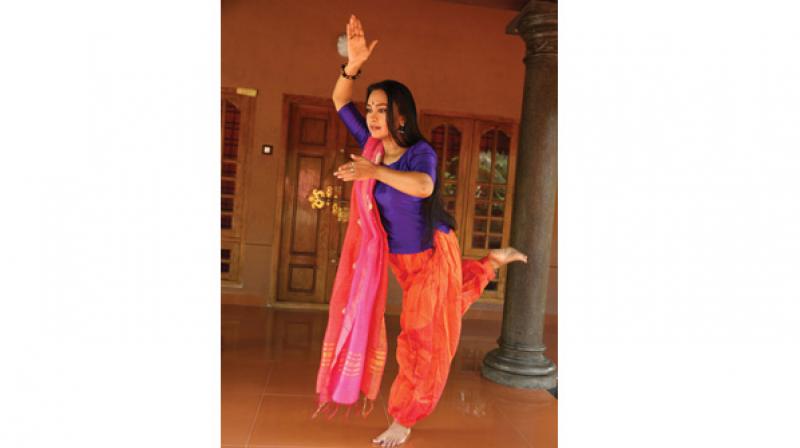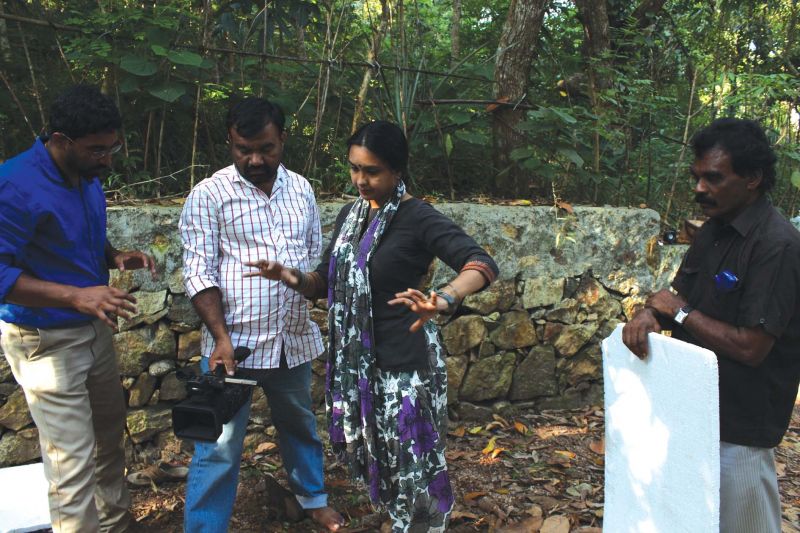Dancing raconteur

Regardless of which generation you belong to, most of us would have grown up on a staple fare of The Panchatantra and The Jataka Tales recited to us either as bedtime stories or as lessons that inculcate moral values. All of us would have listened wide-eyed to the tale of the Bug and the Flea, or laughed at the tale of the King and the Foolish Monkey or sympathised with the Blue Jackal. These stories brought the animals from the jungle to our homes and gave them faces and voices. The Panchatantra and The Jataka Tales will see a novel retelling through the medium of Bharatanatyam mudras. As part of the Great Indian Tales, renowned dancer and classical singer Rajashree Warrier will present 60 of these tales in a way that the children can relate to. It will be available online soon.
The visual concept, choreography and presentation are handled by Rajashree herself. She terms it as a storytelling for children through the medium of Bharatanatyam. Not an often attempted genre, the amalgamation of stories and dance has a clear aim. “I want to bring children closer to this dance form and communicate with them through dance and make them aware of this mode of storytelling. Perhaps a full-fledged Bharatanatyam concert would not snag their attention but a storytelling through dance would be more relatable to a child,” she states. With ever active, curious, lively and wandering minds, it is often difficult to engage the attention of a child for long. Hence, each story lasts between five and eight minutes.
Other than ensuring the children are totally engrossed, Rajashree faced another challenge. According to her, “The language of classical dance, which includes hand gestures, facial expression and body movements, is not difficult to interpret if one pays attention. But how does one go about expressing a cat, a pig, or a lion? Dance has just one mudra representing the animal. But here I had to show all these different animals through the medium of dance. For example, a giraffe in the story becomes differentiated as a giraffe only when the mudra, the body movement and the facial expression become one! The same with dancing to the story of The Right Mind and The Wrong Mind. How does one show that?”
 Rajashree Warrier and crew engrossed in the making of the video outdoors
Rajashree Warrier and crew engrossed in the making of the video outdoors
Rajashree reveals there were times when she just sat down, weighed down by the perplexity of explaining certain stories. Though a challenge, it was also a huge learning process for the talented dancer. She explains, “In a typical dance performance there is rhythm and music but here the music is only an English voice over. The story that was narrated had to be translated to a dance form.” The restructuring of the 60 stories for the project is in a manner comprehensible to children and malleable to the medium of Bharatanatyam, with the voice over in English being handled by Shobha Tharoor Sreenivasan.
Rajashree has not introduced the medium of dance or nritham directly to the children in all the 60 stories but has gone about it in stages of twenty each. She says, “In the first 20 stories the stress is on word by word gesticulation and these have elements of Nritya, which is explaining in simple dance mode. It is devoid of music.” The next 20 has Nritha, which incorporates pure dance elements and the last 20 introduce Natya, which is a dramatic descriptive element of classical Indian dance through the linguistic fabric of Bharatanatyam. Both Nritha and Natya have music elements. This differentiation is for the children to understand the difference between the three.
This project, conceptualised by Invis Multimedia for children, has resulted in a year-long period of hard work for Rajashree. Most of the shooting for the project has been done outdoors, in a forest-like ambience, to make the stories more believable. Rajashree had shown some of the videos to children to gauge their response and she happily announces, “Children in the age group of 3-4 years have sat spellbound through the dance storytelling and that is what gives me happiness.” Rajashree has also taken care to see that the costumes she dons are not elaborate like in dance concerts. She dons simple but colorful salwar suits to dance to the stories. Rajashree’s future plans include the retelling of Akbar-Birbal and Tenali Raman stories in dance format.

